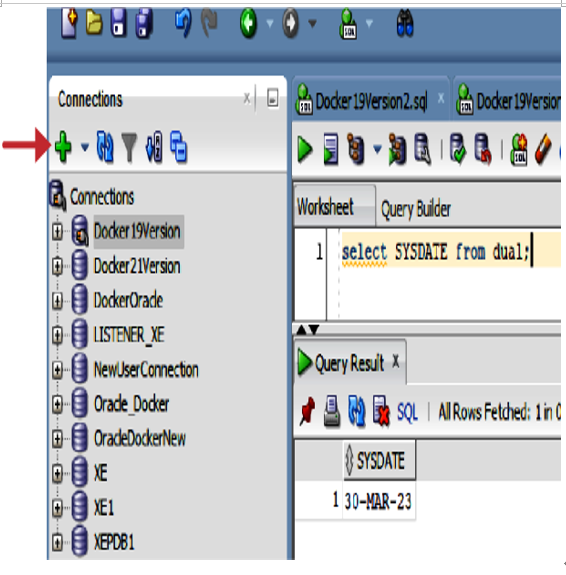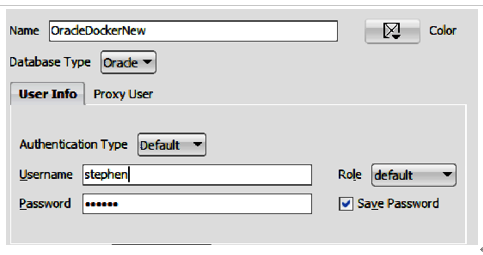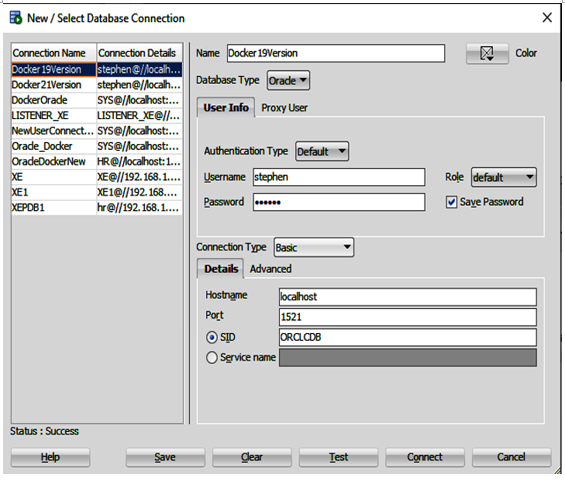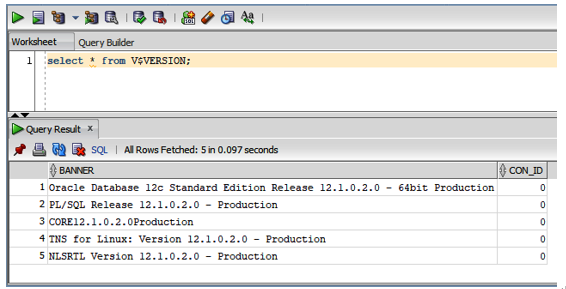The next step is to extract the zipped file and follow the installation steps on the website. Let’s now finally configure SQL Developer to use our Docker-containerized Oracle Database.
Launch the newly installed SQL Developer application and click the plus sign at the top left of the main window shown in Figure 2-5.

Figure 2-5. Create a connection to the Oracle Database container
This should prompt you to create a new connection to the database. To do this, you must supply your Oracle Database connection details and your user credentials, as shown in Figure 2-6.

Figure 2-6. Challenging the user for credentials and Oracle Database connection details
In the database connection dialog shown in Figure 2-6, insert the indicated details. For the username and password, remember to use the same ones you configured in Example 2-5 for the Oracle Database. In Figure 2-6, I’ve inserted my own username for illustration. Just make sure to use the one you set up.
For the SID, use the value ORCLCDB from Example 2-1.
Tip
If, at any time, you experience issues with the connection to the Oracle Database, then you can right-click on the appropriate connection in Figure 2-5 and select Properties.
This opens a dialog displaying the connection properties, which allows you to look more closely at the connection details.
The connection properties are shown in Figure 2-7.

Figure 2-7. Examining the details of the connection to the Oracle Database
A really nice feature of SQL Developer is the Test button, which you can see at the bottom of Figure 2-7. The Test button allows for easy verification of your installation. Click it to see if the new SQL Developer connection is able to communicate with your Docker-containerized Oracle Database. If all is well, you should see something similar to Figure 2-7.
Notice the text Status: Success in the lower-left corner of Figure 2-7. This indicates that a successful connection has been made to the Dockerized Oracle Database instance.
If you’ve made it this far without incident, then well done. You’re now up and running with a containerized Oracle Database that is accessible using SQL Developer. We’ve covered a good bit of ground in this chapter.
One quick test to verify that your database connection is good is to run the following SQL script:
SELECT
*
FROM
V$VERSION
;
The query result should indicate the version number of the Oracle Database, as shown in Figure 2-8.

Figure 2-8. Successful SQL test query
As can be seen in the query result window in Figure 2-8, we have a fully configured Oracle Database installation.
Now that the installation is complete, let’s briefly review the procedure for running the Oracle Database container and SQL Developer.